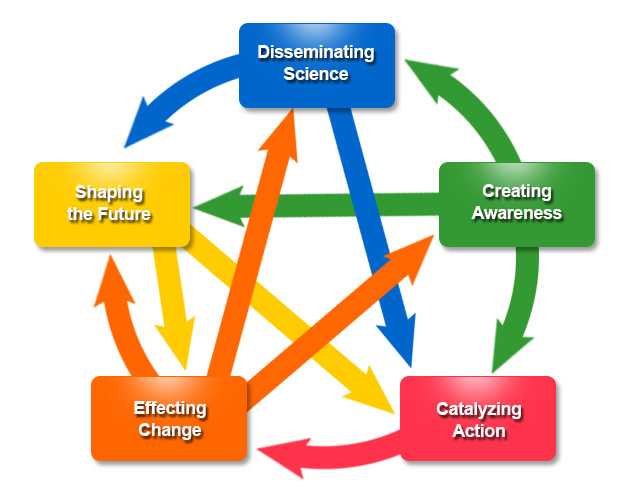Description of the Science Impact Framework
The framework illustrates the “Historical Tracing Method” with 5 domains of CDC scientific influence that define degrees of impact that may not be chronological (the degree of impact is not necessarily a progression; therefore, events captured may not be reflected at every domain). In addition, there may be loop-back at any point. Health outcomes are the ultimate goal – driven by the 5 domains of influence. Key indicators are listed for each domain of influence as a way to track and qualify events at each domain of influence. These indicators are flexible, and the ones listed are some examples.
Key Indicators [241 KB]

Key Indicators
- Scientific publication (open access journal)
- Trade publications
- Professional meetings/conferences
- General communication (social media, web, print)
- Presentations
- Training, coursework
- Other scientific output (CDC Public Health Grand Rounds, Vital Signs, Science Clips)
- Continuing education (CME, CEU) Awards
- Stakeholder resources, curriculum, training
- Feedback (survey, focus groups, anecdote)
- Information sharing, communications among professional societies
- Electronic communications (information shared on listservs, social media, news coverage)
- Queries
- Requests to contribute to efforts that further science output
- Technology creation
- New funding (pilots/research)
- Advocacy groups/NGOs
- Congressional hearings
- Partnerships and collaborations
- Research and development
- Office practice/point of care changes
- Building public health capacity (e.g., workforce development, funded research, improved staff competency)
- Creation of registries/surveillance
- Legal/policy changes
- Accreditation
- Cultural/social change
- Behavioral change
- Economic change
- CMS reimbursement
- Other payer actions
- Change instilled
- (New) formal guidelines and recommendations (e.g., WHO)
- Hospital standards
- Funding
- Anecdotes/case studies
- Sustainable and scalable science translation
- New hypothesis/continuous quality improvement
- Implementation of public health programs/initiatives
- Health outcomes
- Prevalence and incidence
- Morbidity and mortality (e.g., frequency of outbreaks, trends)
- Life expectancy
- Quality of life improvements
- Reductions in economic burden
- Page last reviewed: June 15, 2017
- Page last updated: June 15, 2017
- Content source:
- Office of the Associate Director for Science


 ShareCompartir
ShareCompartir